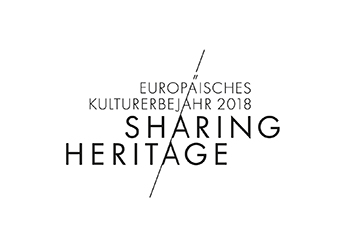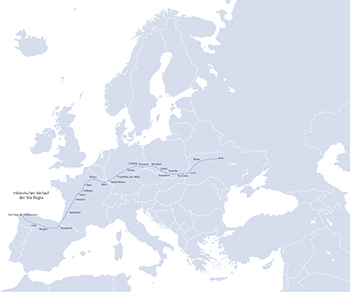Academic thesis
| Vivien Bögelsack: | The role of heritage management in the European Cultural Heritage Year 2018 Five essays on multi-layered cultural influences in border regions, on Europe´s cultural ties and the creation of a European identity. |
back |
| Language: | Original - Translation | |
| Overview: |
|
|
 The logo of the German contribution to the European Cultural Heritage Year 2018 and the motto: Sharing Heritage, sharing the common heritage.
|
|
| Abstract: | For years the political situation in Europe has been unstable: the euro crisis, the Greek crisis, the refugee crisis, the withdrawal of Great Britain from the EU, (...). In addition, in many countries a return to one´s own nation and a growing right-wing populism can be heard. There is a danger that fears within the population will be stirred up in order to use them to pursue their own political goals. But there is also the danger of instrumentalising (architectural) monuments and cultural heritage: To emphasize culture as national, to give a romanticized but false image of the past. How can these dangers be counteracted? One possible way: to identify common ground with culture. For a look at the history of the continent shows that national borders have only recently emerged, that Europe is a continent full of regional cultures that have influenced each other - for thousands of years. Europe is a cultural area that has grown together. In order to become aware of precisely these European commonalities and ties, the European Cultural Heritage Year will be celebrated in 28 European countries in 2018. This Master´s thesis focuses on the topic of European border regions. For centuries, the European continent was regionally shaped and a "patchwork carpet" of different kingdoms and duchies. It was only in the course of the last three centuries that nation states were founded, whose borders in turn often shifted as a result of wars and agreements. Our present borders are relatively new - accordingly, cultural influences of the respective neighbouring nations can be found here. How can we recognize the different cultural influences? A special focus is the role of monument conservation. The core of its field of activity is the research, preservation and communication of monuments. If they are used to convey a false image of the past, what is the role of the preservation of historical monuments? On the basis of five academic essays, the master´s thesis examines various examples that illustrate the cultural overlaps in border regions, include the role of monument preservation and consider approaches to European identity formation. |
| Keywords: | Europe, cultural heritage, cultural heritage year 2018, border regions, monument preservation, European borders, Sudetenland, VIA REGIA, Alsace, European Heritage Label, Hambach Castle |
 The cultural route via regia leads from Santiago de Compostela (Spain) to Kiev (Ukraine).
|
|
| Details: |
|
| Contact: |
Vivien Bögelsack mail@[Diesen Teil loeschen]vivienboegelsack.de |
| Download: |
full-text thesis (pdf-data format, approx. 7.59 MB) |
| DOI (Digital Object Identifier) | 10.5165/hawk-hhg/464 |
The Hornemann Institute offers only the information displayed here. For further information or copies of academic work, please contact the author or - if there is no contact provided - the secretariats of the respective faculties.